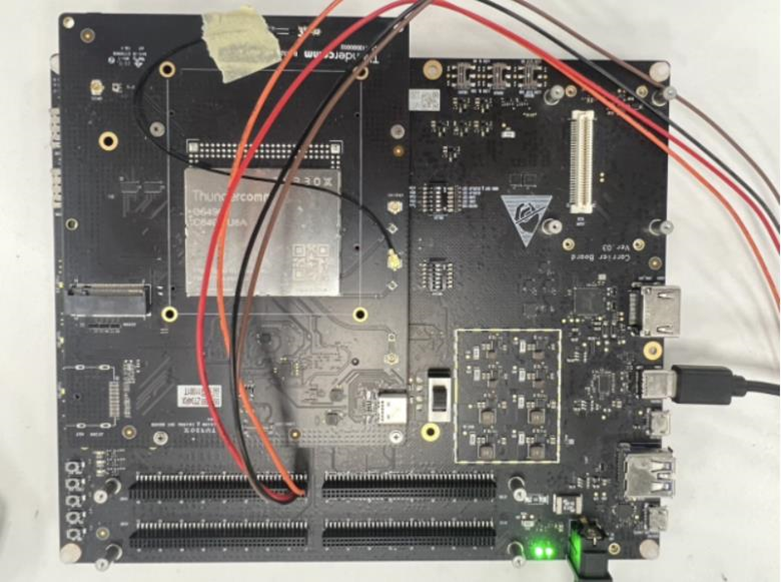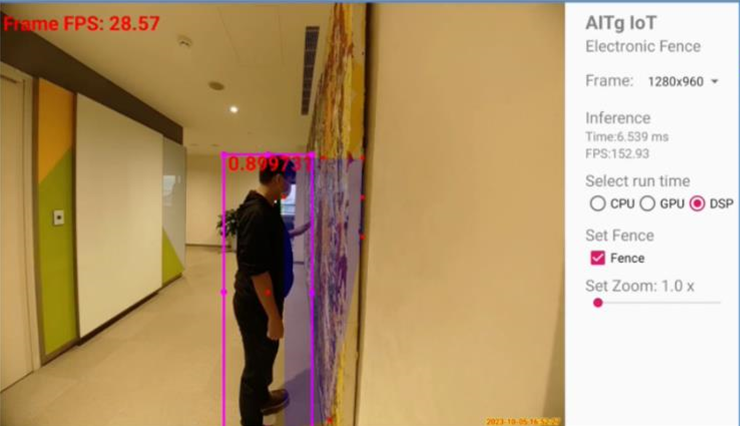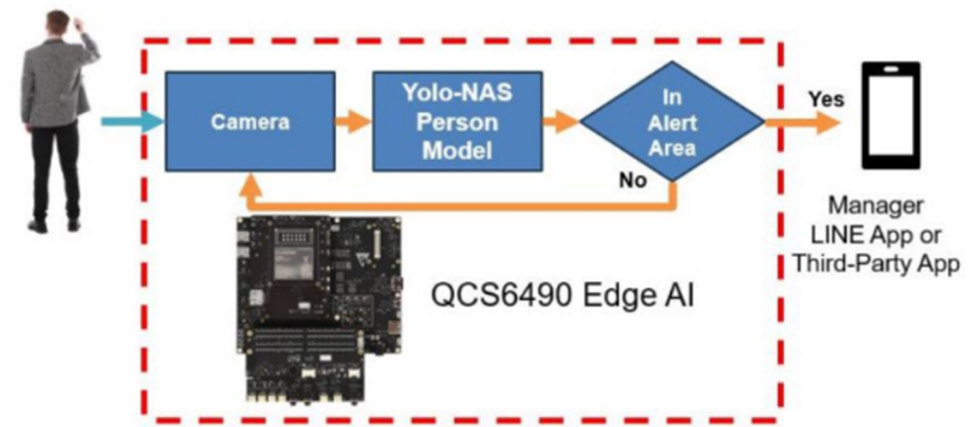WPG Holdings' Qian Ding Group Launches AI Electronic Fence Solution Based on Qualcomm and Thundercomm Products
2025-07-16 10:49:49 707
On July 16, 2025, WPG Holdings, an international leading semiconductor component distributor focused on the Asia-Pacific market, announced that its subsidiary, WPG, has launched an AI electronic fence solution based on Qualcomm's QCS6490 SoC and Thundercomm's Turbox C6490 development board.

Figure. 1 Demonstration board diagram of Daliangda Chuanting's AI electronic fence solution based on Qualcomm and Thundercomm products
Against the backdrop of escalating global security demands and the deep integration of IoT technology, electronic fences, as a new generation of intelligent security solutions, are accelerating their evolution from traditional physical protection to intelligent and data-driven systems. Leveraging AI and remote communication technologies, electronic fences can accurately identify and predict intrusion behaviors, effectively reducing false alarm rates. Combined with big data analysis, they enable real-time perception of security situations and intelligent decision-making. The AI electronic fence solution developed by Daliangda Chuan Ding based on the Qualcomm QCS6490 SoC and Thundercomm Turbox C6490 development board features real-time monitoring and intrusion detection capabilities, offering efficient and flexible intelligent security deployment for industrial, commercial, and smart city applications.

Figure. 2 Daliangda Chuan Ding's AI electronic fence solution based on Qualcomm and Thundercomm products: Scenario application diagram
The QCS6490 is a high-performance system-on-chip (SoC) specifically designed for industrial and commercial IoT applications, supporting Wi-Fi 6E wireless connectivity. The chip integrates multi-camera processing, AI acceleration, and edge computing capabilities to meet the demands of advanced IoT devices, delivering exceptional performance under low-power conditions. In terms of processing performance, the chip is equipped with a Qualcomm Kryo™ 670 CPU and Hexagon processor, utilizing a fusion AI accelerator architecture to efficiently handle complex computations and real-time data while providing stable and reliable connectivity. Additionally, the QCS6490 offers multi-operating system compatibility, supporting Android, Linux, Ubuntu, and Microsoft Windows IoT Enterprise, enabling flexible adaptation to diverse application scenarios such as industrial automation, smart security, and smart retail.
The Thunderconn Turbox C6490 development board is based on the Qualcomm QCS6490 processor, supports Wi-Fi 6E, long-range Bluetooth, and optional 5G NR connectivity, and is equipped with five 4-channel MIPI CSI D-PHY interfaces (two of which support 3-channel MIPI CSI C-PHY, with support for up to 48M cameras). In addition, the C6490 development board has a rich set of peripheral interfaces, including concurrent use of USB 3.1 and USB 2.0, as well as a PCIE interface, fully meeting the development needs of high-performance AIoT devices. Furthermore, to support development in different application scenarios, the Turbox C6490 adopts a modular design, with components including the main IO board, adapter board, audio board, and sensor board, helping customers accelerate product development and performance verification.

Figure. 3 Block diagram of WPG's AI electronic fence solution based on Qualcomm and Thundercomm products
This solution uses the Yolo-NAS pedestrian detection AI model and combines it with a manually set warning area function. When the AI model detects a pedestrian, it marks them. If the marked pedestrian stays in the warning area for about 1 second, the system will automatically issue a warning and send relevant images. To ensure timely notification of relevant personnel, this solution supports integration via Line Notify and other third-party communication application backend APIs. Through these communication tools, relevant personnel can receive real-time alert information and on-site photos, enabling them to make accurate judgments and take appropriate actions based on the photo content.
Core Technical Advantages:
High-Performance Computing: Multi-core Kryo CPU and Adreno GPU provide powerful computing and graphics processing capabilities;
AI Computing Power: Integrates the Hexagon DSP and Qualcomm AI Engine, providing up to 12TOPS of AI computing power;
Low Power Consumption Design: High energy efficiency and intelligent power management, suitable for devices requiring prolonged operation;
Scalability and Flexibility: Supports multiple interfaces and peripherals, and provides a rich set of software development tools and SDKs.
Solution Specifications:
AI: Sixth-generation Qualcomm AI Engine;
Connectivity WLAN: Supports Wi-Fi 6 (802.11ax) and Wi-Fi 6E (6GHz), Bluetooth® 5.2, and FM. Uplink/downlink MU-MIMO, 4K QAM, 160MHz channels (5GHz and 6GHz);
CPU: 8×Kryo 670 CPUs, clock speeds ranging from 1.9GHz to 2.7GHz;
Graphics processor: Adreno GPU 643, supporting OpenGL ES 3.2, OpenCL 2.0, Vulkan 1.x, and DXFL 12;
DSP: Compute Hexagon DSP, supporting dual HVX and 4K HMX;
Memory and storage: Dual-channel, non-PoP LPDDR5/LPDDR4X SDRAM, UFS 2.x/3.1, dual-channel HS gear 4, SD v3.0, eMMC 5.1, PCIe dual-channel NVMe;
Display support: Adreno 1075 DPU;
Camera support: Qualcomm Spectra™ ISP 570L 64 MP/36+22 MP/3×22 MP at 30fps ZSL 192 MP non-ZSL;
Video: H.264/H.265/VP9 decoding up to 4K60, H.264/H.265 encoding up to 4K30, supports HDR10 and HDR10+ playback;
Location: GPS, GLONASS, NavIC, BeiDou, Galileo, QZSS, and SBAS;
Operating system: Android, Ubuntu, Yocto, Windows.




